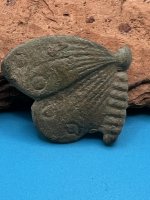This is good stuff in my opinion. Best bill I've seen proposed in years and there is a good chance of it passing. 
National Monument Creation and Protection Act
Please read it before commenting.
Please no politics and no dog poo. This is serious stuff.
Heavy Pans

National Monument Creation and Protection Act
Please read it before commenting.
Please no politics and no dog poo. This is serious stuff.
Heavy Pans
Amazon Forum Fav 👍
Upvote
0







